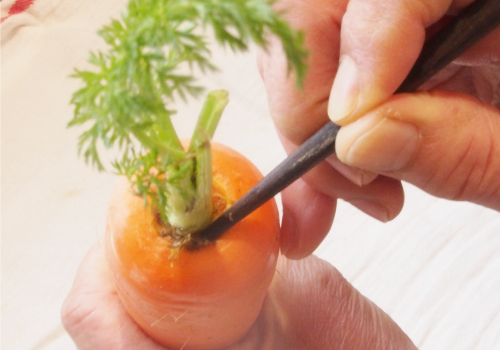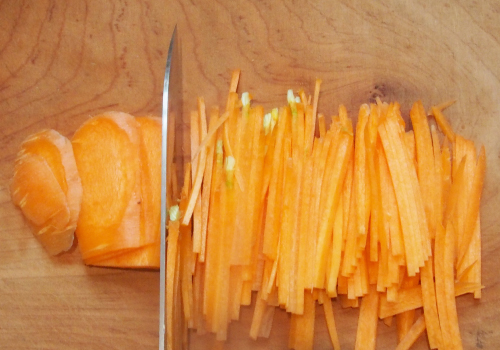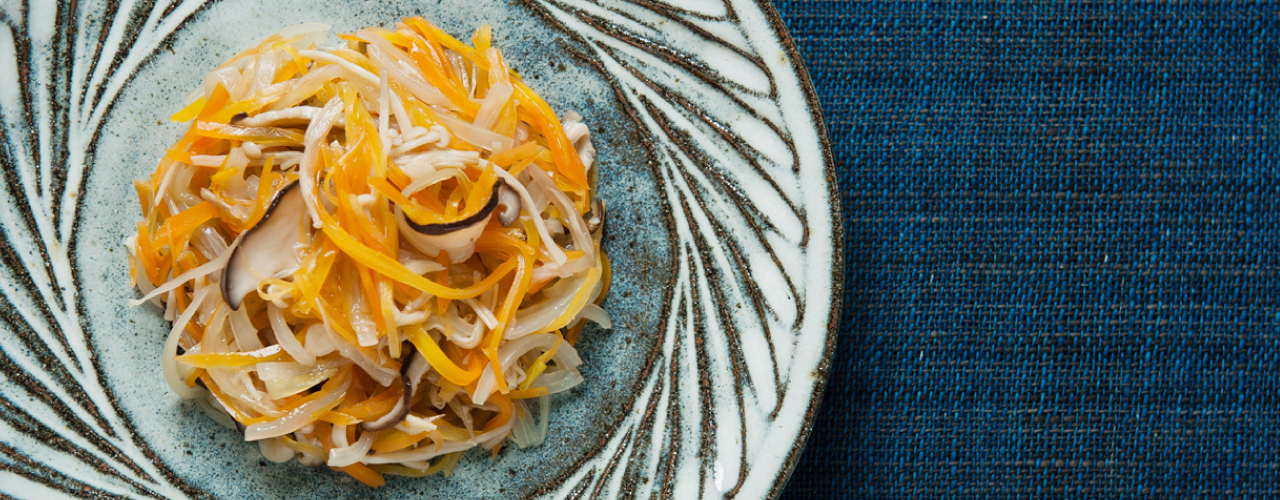
But KASANENI is much more than that!
The attitude required for a good layered simmering is gratitude for food and a love of ingredients. In addition, as will be described later, it is also important to remove waste during the cooking of layered simmering. It also leads to an awareness of what the global environment should be like. We are integral parts of the earth, and this cooking technique also helps us to realize how the act of eating by humans affects the global environment.
Another crucial point concerns the feelings of one who simmers vegetables in layers by stacking them in a pan according to the providence of nature. For example, if you don't have love and respect for the ingredients, and if you do it with the feeling that "this is annoying!" or that "it's irritating", strangely, the layered simmer won't give you a strong taste. This is very different from general cooking, where it is enough to cook following the recipe so that the average taste is reproduced.
What you eat constitutes you, so if you cook with a "feeling of weariness" or "irritation", those feelings will influence the taste of the food and that taste will then enter your body. This is what makes the body. Do you realize that the people who prepare meals for their homes and the loved ones not only prepare food for nutrition, but also the lives, thoughts and nerves of those who eat them? It is also the layered simmer that allows you to achieve this. “Cooking” is a very important and wonderful job. Consuming a simmered dish in layers will make it easy for you to understand the feelings of the person who prepared it.
When the person cooking the simmered dishes manages to adjust their own feelings, the vegetables, who are the main characters, will be happy to be placed in the pressure cooker. It's not difficult at all if you treat the vegetables with enough care to make them think, "I'm glad that person cooked me! I'm glad my life is part of that person!"
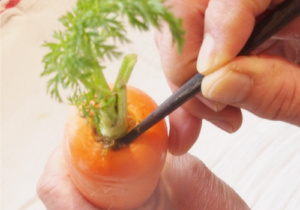
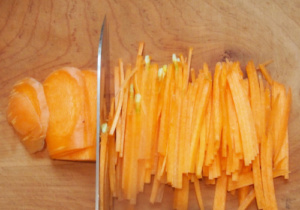
As an example, take the case of carrots. As a concrete action to treat carrots with care, we introduce the "Carrot-chan rolling cleaning method" in the layered cooking class. Most carrot leaves and roots are cut with a kitchen knife, but in layered cooking, the slightly dented part at the root of the leaves is not cut, but moved with chopsticks, and the dirt is scraped off.
This will keep it nice and clean even if it was very dirty and will not come off even if you wash it with a scrub brush. If you clean it well, you don't need to cut it. If you could speak for the feelings of the carrots at that point, you would say, "Thanks for eating the part everyone cut!" And even after being eaten, happy carrots will surely become a part of the person without complaining.More
In fact, the stems and roots are also unnecessary parts to cut and throw away. This is because the growth point is the part where cell division is actively carried out. In other words, this is the part where the carrots' ability to grow is concentrated. Cooking without throwing out such a large portion is also a big advantage of simmering.
Even with other vegetables, I think the part that is cut subconsciously is often the growing point. If you change your consciousness a bit, what used to be perceived as food waste will suddenly become a treasure full of vitality. If you observe the other parts carefully and start to know how to handle them, you will notice that there are hardly any parts to throw away in the vegetables. If you have such an experience by simmering in layers, you will not be able to cut the carrot stems and carefully cook the mushroom stems, onion wicks, lotus root nodes, cucumber sardines, cabbage wicks. , etc. As a result, it will lead to waste reduction. And even the smallest amount of fuel and CO2 to burn garbage can be reduced.
Before you know it, you will be able to handle not only the vegetables but also all the ingredients with care, and you will also be thinking about how to prepare and cut them. Plus, sharp kitchen knives, neatly organized cutting boards, clean rags, and vegetable-friendly pressure cookers will expand your awareness. As a result, the food will become delicious. It may sound strange, but people feel that when they change their eating habits, their feelings change as well. Many will be more inclined to live more personal lives.
When you simmer in layers, when you show the vegetables that you treat them with enough care to make you think “I'm glad the vegetables have been eaten by me!” The vegetables will react accordingly and be delicious. Layered Simmering teaches you how to protect yourself and your loved ones by following nature's providence and treating vegetables with care. Layering isn't the only way to simmer, and there's a world that can be seen beyond layers. There may be people who cry just when they have a bite to eat because it is a dish that has been simmered with such feelings.
This will keep it nice and clean even if it was very dirty and will not come off even if you wash it with a scrub brush. If you clean it well, you don't need to cut it. If you could speak for the feelings of the carrots at that point, you would say, "Thanks for eating the part everyone cut!" And even after being eaten, happy carrots will surely become a part of the person without complaining.More
In fact, the stems and roots are also unnecessary parts to cut and throw away. This is because the growth point is the part where cell division is actively carried out. In other words, this is the part where the carrots' ability to grow is concentrated. Cooking without throwing out such a large portion is also a big advantage of simmering.
Even with other vegetables, I think the part that is cut subconsciously is often the growing point. If you change your consciousness a bit, what used to be perceived as food waste will suddenly become a treasure full of vitality. If you observe the other parts carefully and start to know how to handle them, you will notice that there are hardly any parts to throw away in the vegetables. If you have such an experience by simmering in layers, you will not be able to cut the carrot stems and carefully cook the mushroom stems, onion wicks, lotus root nodes, cucumber sardines, cabbage wicks. , etc. As a result, it will lead to waste reduction. And even the smallest amount of fuel and CO2 to burn garbage can be reduced.
Before you know it, you will be able to handle not only the vegetables but also all the ingredients with care, and you will also be thinking about how to prepare and cut them. Plus, sharp kitchen knives, neatly organized cutting boards, clean rags, and vegetable-friendly pressure cookers will expand your awareness. As a result, the food will become delicious. It may sound strange, but people feel that when they change their eating habits, their feelings change as well. Many will be more inclined to live more personal lives.
When you simmer in layers, when you show the vegetables that you treat them with enough care to make you think “I'm glad the vegetables have been eaten by me!” The vegetables will react accordingly and be delicious. Layered Simmering teaches you how to protect yourself and your loved ones by following nature's providence and treating vegetables with care. Layering isn't the only way to simmer, and there's a world that can be seen beyond layers. There may be people who cry just when they have a bite to eat because it is a dish that has been simmered with such feelings.

